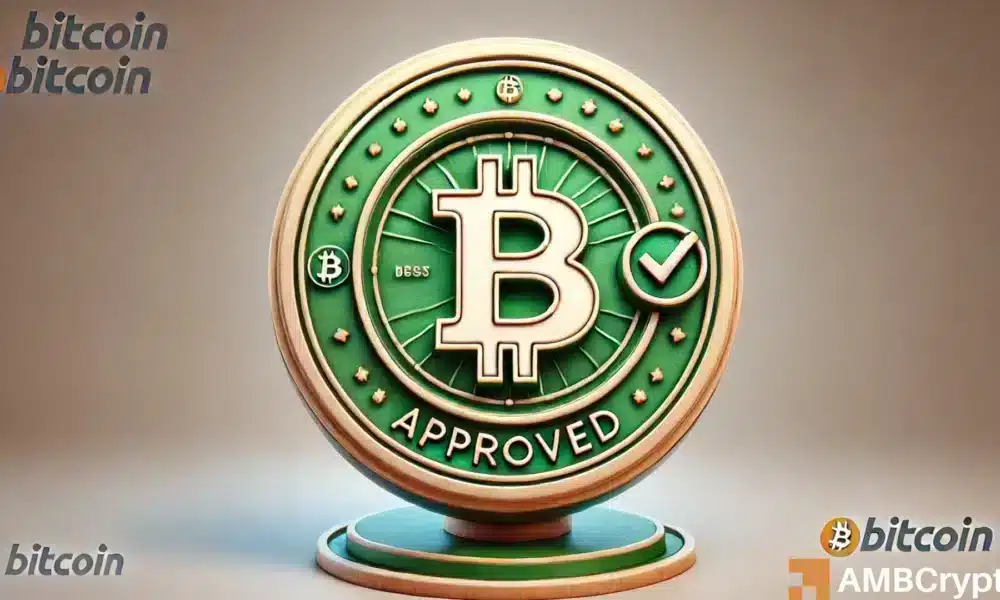¿El Crypto Task Force de la SEC provocará un nuevo repunte de Bitcoin?

- El ‘Crypto Task Force’ es el primer paso importante de la nueva administración para el mercado de las criptomonedas.
- La línea borrosa entre regulación y movimiento del mercado: ¿señal alcista o advertencia bajista?
Una luz verde regulatoria y la capitalización del mercado criptográfico aumentó un 3,70%. Bitcoins[BTC] El salto del 3,56% lo dice todo.
Mientras se habla de «más por venir», la línea entre regulación y movimiento del mercado se vuelve más borrosa. A medida que aumenta el “bombo publicitario” impulsado por FOMO, ¿será suficiente para que Bitcoin cumpla su promesa alcista del primer trimestre?
Un ‘Grupo de Trabajo Cripto’: ¿El primero de muchos?
Los inversores comienzan el Año Nuevo con un mensaje claro: no más promesas vacías: es necesario actuar. Ingrese a la nueva SEC anunciado ‘Crypto Task Force’, diseñado para abordar de frente la regulación de las criptomonedas. La respuesta del mercado fue rápida y decisiva.
El tema dominante de este año es la reducción del apetito por el riesgo. Si bien genera cautela, también genera una mayor volatilidad. La ‘bomba de Trump’ después de la toma de posesión no se desarrolló, y BTC experimentó una gran toma de ganancias, cayendo un 6,4% el mismo día que alcanzó un récord de $109,000.
Después del anuncio de la SEC, el patrón se repitió. Un rebote del 3,56% devolvió al BTC a 106.164 dólares. Sin embargo, se enviaron 50.811 BTC a las bolsas en poco tiempo, lo que provocó una liquidación de 5.400 millones de dólares.
Con tal volatilidad, es difícil predecir el pico o el fondo de Bitcoin. ¿Las tendencias históricas allanarán el camino para un primer trimestre alcista? Desde el aumento postelectoral, la capitalización del mercado de criptomonedas ha aumentado un 60%, con miles de millones ingresando y los HODLers disfrutando de mayores márgenes de ganancias.
En última instancia, todo se reduce a la convicción de un futuro alcista. En este momento, esa convicción pende de un hilo. Si los movimientos recientes son solo el comienzo, FOMO mantendrá el revuelo a corto plazo. Pero el verdadero cambio de juego podría ser una reserva estratégica de Bitcoin.
Hasta que llegue ese visto bueno ejecutivo, espere más altibajos. Ambos institucional y los inversores minoristas están en alerta máxima, observando estratégicamente sus puntos de entrada y salida mientras el mercado sigue siendo impredecible.
Aun así, no se pueden ignorar algunos factores clave
El aumento postelectoral del mercado de las criptomonedas no fue una casualidad. El regreso de Trump como el 47º presidente de EE.UU. llegó con un fuerte respaldo de las principales empresas. magnatesseñalando una nueva era de capitalismo extremo.
¿El avance de los 100.000 dólares de Bitcoin? Fue un resultado directo de este poderoso cambio. Entonces, si bien la volatilidad a corto plazo es inevitable, las perspectivas a largo plazo de Bitcoin siguen siendo alcistas.
Dado que la probabilidad de un recorte de tipos en la próxima reunión del FOMC alcanza un impresionante 99,5%, un 1,6% más que el día anterior, el optimismo de los inversores está aumentando.
Leer Bitcoins [BTC] Predicción de precios 2025-2026
Con el Crypto Task Force marcando la pauta, la confianza en la estabilidad económica y política está aumentando constantemente.
Aunque el primer trimestre comenzó con una caída en el apetito por el riesgo, si estos factores se alinean, el atractivo de alto riesgo y alta recompensa de Bitcoin pronto atraerá más capital.
Esto prepara el escenario para un 2025 alcista. Por ahora, se justifica la precaución.
Esta es una traducción automática de nuestra versión en inglés.




![Bitensor [TAO] Cubra las listas de IA una vez más, pero se cierran 3 obstáculos](https://es.ambcrypto.com/wp-content/uploads/2025/04/420567A0-9D98-4B5B-9FFF-2B4D7BD2D98D-1000x600.webp-400x240.webp)

